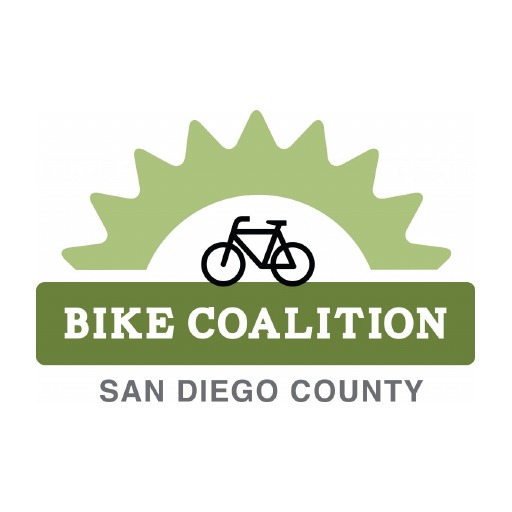People riding bikes on public streets have the same rights and responsibilities as automobile drivers and are thus subject to the same rules and regulations. Over one hundred people are killed in bicycle-related collisions each year in California and thousands more are injured. The keys to safe bicycling include being predictable and visible while consistently communicating your intentions to motorists.
Scroll down to learn more about…
- California Vehicle Code Basics
- Lanes and Routes
- Equipping a Bicycle (Lights and Reflectors)
- Where You Can Ride
- Making Turns on a Bicycle
- Links to additional resources
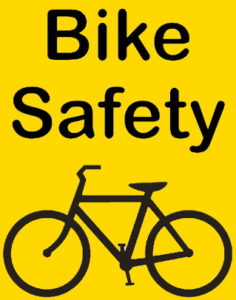
California Vehicle Code Basics
Defining a Bicycle V C Section 231. A bicycle is a device upon which any person may ride, propelled exclusively by human power through a belt, chain, or gears, and having one or more wheels. Persons riding bicycles are subject to the provisions of this code specified in Sections 21200 and 21200.5.
Maintaining Control of a Bicycle V C 21200(a) A person riding a bicycle or operating a pedicab upon a highway has all the rights and is subject to all the provisions applicable to the driver of a vehicle by this division, including, but not limited to, provisions concerning driving under the influence of alcoholic beverages.
V C 21200.5 Provides that any person operating a bicycle cannot lawfully do so while under the influence of an alcoholic beverage and/or any drug. Any person arrested for violation of this section may request a test of blood, breath, or urine to determine alcohol and drug content of that person’s blood. If convicted, an individual in violation of this section shall be punished by a fine of not more than two hundred fifty dollars ($250). People who violate this section and are between the ages of 13 and 21 shall have their driving privilege suspended or delayed for one year.
Safety V C 21212 Requires any person riding a bicycle under the age of 18 to wear a properly fitted helmet.
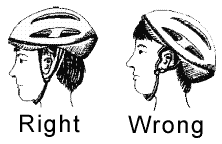
Paths, Lanes, Routes and Cycle Tracks
There are three types of bicycle facilities identified in the California Highway Design Manual. Bike paths (Class I), bike lanes (Class II), bike routes (Class III) and cycle tracks (Class IV).
- Bike paths (Class I), also termed shared-use or multi-use paths, are paved right-of-way for exclusive use by bicyclists, pedestrians and those using non-motorized modes of travel. They are physically separated from vehicular traffic and can be constructed in roadway right-of-way or exclusive right-of-way. Bike paths provide critical connections in the City where roadways are absent or are not conducive to bicycle travel.
- Bike lanes (Class II) are defined by pavement striping and signage used to allocate a portion of a roadway for exclusive or preferential bicycle travel. Bike lanes are one-way facilities on either side of a roadway. Whenever possible, bike lanes should be enhanced with treatments that improve safety and connectivity by addressing site-specific issues, such as additional warning or wayfinding signage.
- Bike routes (Class III) provide shared use with motor vehicle traffic within the same travel lane. Designated by signs, bike routes provide continuity to other bike facilities or designate preferred routes through corridors with high demand. Whenever possible, bike routes should be enhanced with treatments that improve safety and connectivity, such as the use of “Sharrows” or shared lane markings to delineate that the road is a shared-use facility.
- Cycle tracks (Class IV), also referred to as
 protected bikeways, are exclusive bike facilities that combine the user experience of a separated path with the on-street infrastructure of a conventional bike lane. A cycle track is physically separated from motor traffic and distinct from the sidewalk. The separation maybe in the form of posts, parked cars or a combination of both. View this graphic to better understand proper use of these lanes:
protected bikeways, are exclusive bike facilities that combine the user experience of a separated path with the on-street infrastructure of a conventional bike lane. A cycle track is physically separated from motor traffic and distinct from the sidewalk. The separation maybe in the form of posts, parked cars or a combination of both. View this graphic to better understand proper use of these lanes:  Using Protected Bikeways
Using Protected Bikeways - For information roads with Sharrows.
Equipping a Bicycle (Lights and Reflectors)
C V C 21201
(a) Requires that any bike being operated on a roadway be equipped with a break that allows the operator to make one braked wheel skid on dry, level, clean pavement.
(b) No person shall operate on the highway any bicycle equipped with handlebars so raised that the operator must elevate their hands above the level of their shoulders in order to grasp the normal steering grip area.
(c) No person shall operate upon any highway a bicycle which is of such a size as to prevent the operator from safely stopping the bicycle, supporting it in an upright position with at least one foot on the ground, and restarting it in a safe manner.
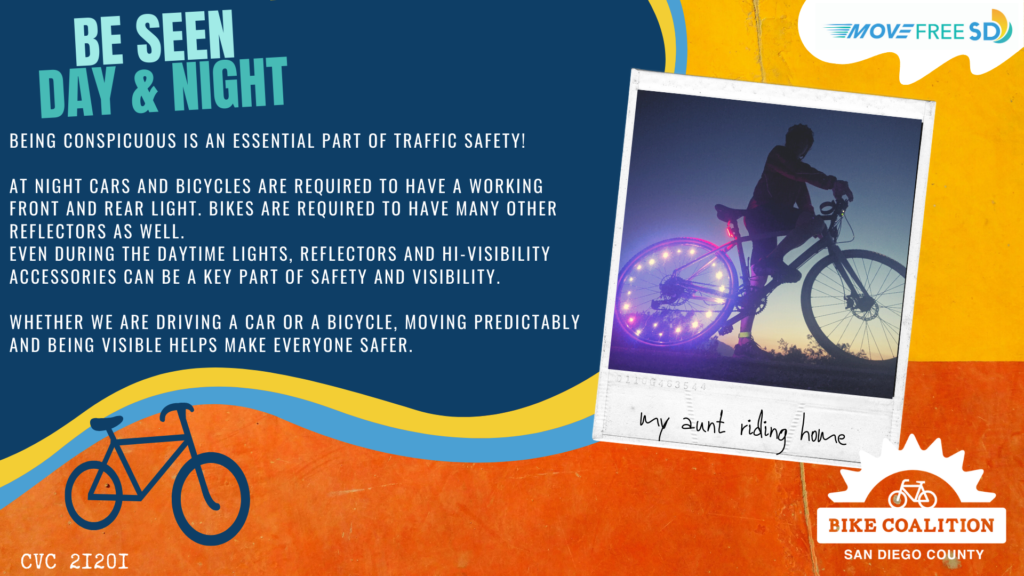
(d) Every bicycle operated upon any highway during darkness shall be equipped with the following:
- A lamp emitting a white light which illuminates the highway and is visible from a distance of 300 feet to the front and the sides of the bicycle.
- A red reflector mounted on the rear of the bicycle and visible from 500 feet to the rear of the bicycle.
- A white or yellow reflector mounted on each pedal visible 200 feet to the front and rear of the bicycle and a white or red reflector on each side to the rear of the center of the bicycle, except bicycles which are equipped with reflectorized tires on the front and the rear need not be equipped with side reflectors. All reflectorized tires must meet DMV requirements.
(e) A lamp or lamp combination, emitting a white light, attached to the operator and visible from a distance of 300 feet in front and from the sides of the bicycle, may be used in place of a lamp attached to the bike.
Where You Can Ride
If you’re moving as fast as traffic, you can ride wherever you want as long as the road doesn’t specifically say “no bikes allowed.”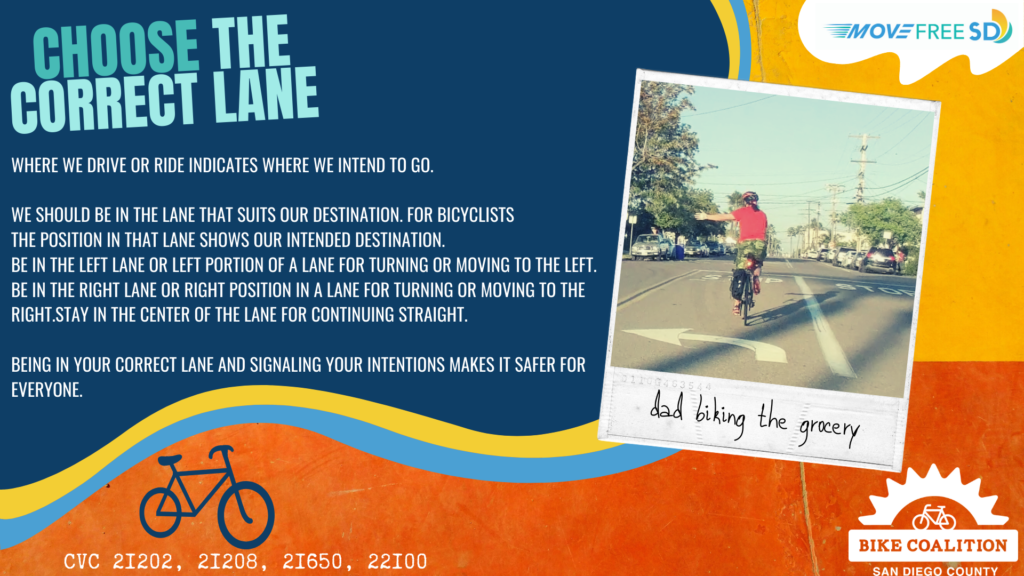
If you’re moving slower than traffic, you can “take the lane” if it’s not wide enough for a bike and a vehicle to safely share side-by-side. The law says that people who ride bikes must ride as close to the right side of the road as practicable except under the following conditions: when passing, preparing for a left turn, avoiding hazards, if the lane is too narrow to share, or if approaching a place where a right turn is authorized. (CVC 21202) Unfortunately, some motorists and even police don’t understand cyclists’ right to “take the lane.” If you have a legal problem based on this understanding, consider calling one of the bike-friendly lawyers we identify on our “Crash Help” page.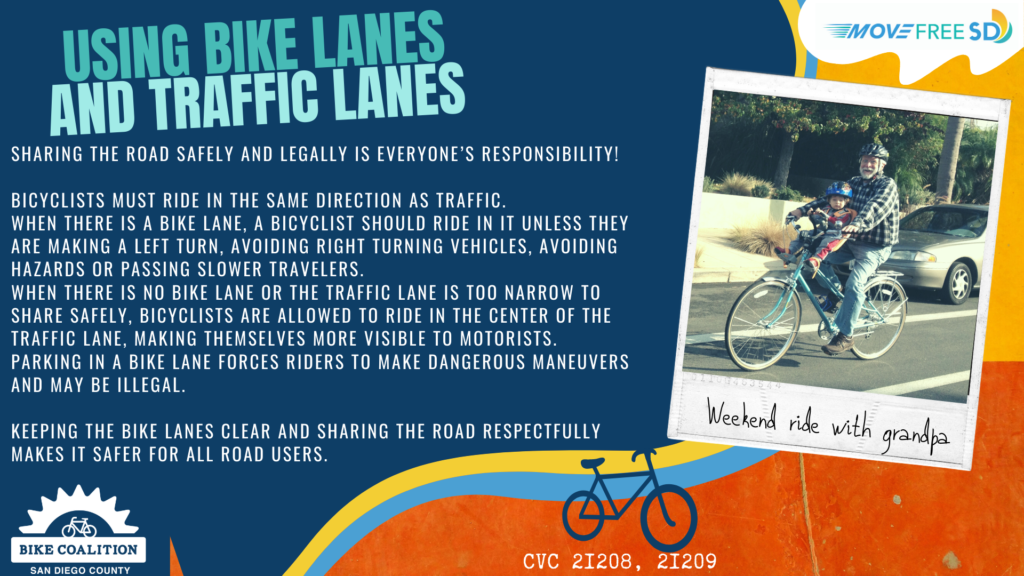
Use the bicycle lane. On a roadway with a bike lane, bicyclists traveling slower than traffic must use the bike lane except when making a left turn, passing, avoiding hazardous conditions, or approaching a place where a right turn is authorized. CVC 21208
You don’t have to use the “protected bike lane.” Once a bike lane is separated from moving traffic with posts or car parking or anything else, it’s no longer a “bike lane” according to the law; it’s a “separated bikeway.” CVC 21208 does not apply. You may ride outside of the separated bikeway for any reason. (SHC 890.4d)
Ride with traffic. Bicyclists must travel on the right side of the roadway in the direction of traffic, except when passing, making a legal left turn, riding on a one-way street, riding on a road that is too narrow, or when the right side of the road is closed due to road construction. CVC 21650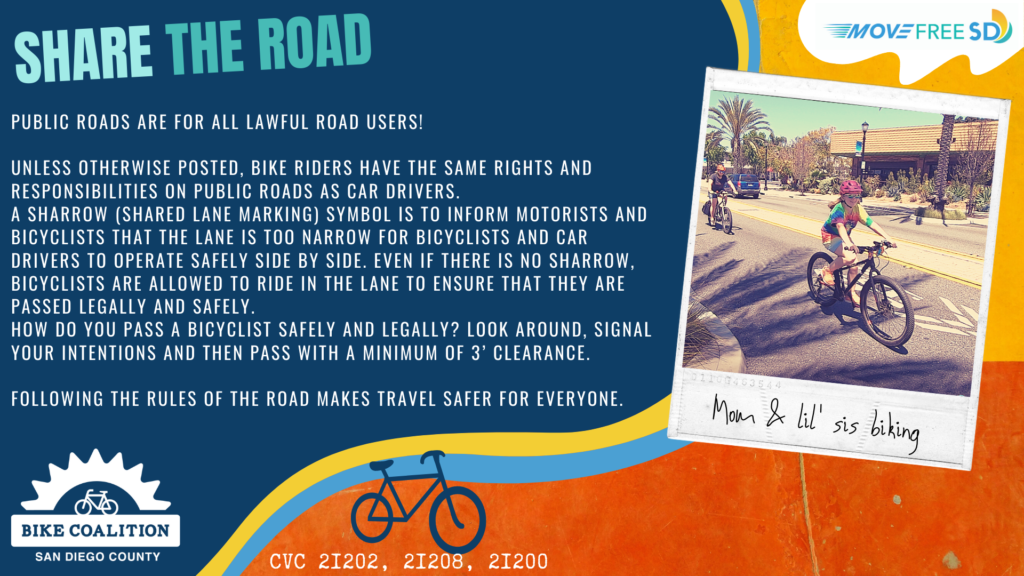
Mopeds and high-speed electric bikes are not like regular bikes. Gas-powered bicycles and type 3 electric bicycles (with top assisted speeds of 28 mph) may not be used on trails or bike paths or lanes unless allowed by local authorities. They may be used in bike lanes or separated bikeways adjacent to the roadway. CVC 21207.5 They require helmets and may not be operated by people under age 16.
Low-speed electric bicycles are almost like regular bikes. Type 1 and 2 electric bicycles (with top assisted speeds of 20 mph) are allowed wherever regular bikes are allowed unless a sign specifically prohibits electric bicycles.
Bike path obstruction: No one may stop on or park a bicycle on a bicycle path. CVC 21211
Sidewalks: Individual cities and counties control whether bicyclists may ride on sidewalks. CVC 21206
Freeways: Bicycles (including motorized bicycles) may not be ridden on freeways and expressways where doing so is prohibited by the California Department of Transportation and local authorities. CVC 21960
Toll bridges: Bicyclists may not cross a toll bridge unless permitted to do so by the California Department of Transportation. CVC 23330
Three Feet for Safety Act
The Three Feet for Safety Act went into effect on September 16, 2014. This act mandates California motorists to give people on bikes at least three feet of space when passing them on the road, and also provides a way for law enforcement to enforce safe passing. Click here to learn more about the Three Feet for Safety Act.
Signaling while riding a Bicycle
When to Signal: Any signal of intention to turn right or left shall be given continuously during the last 100 feet traveled by the vehicle before turning. CVC §22108
How to Signal:
All required signals given by hand and arm shall be given from the left side of a vehicle in the following manner: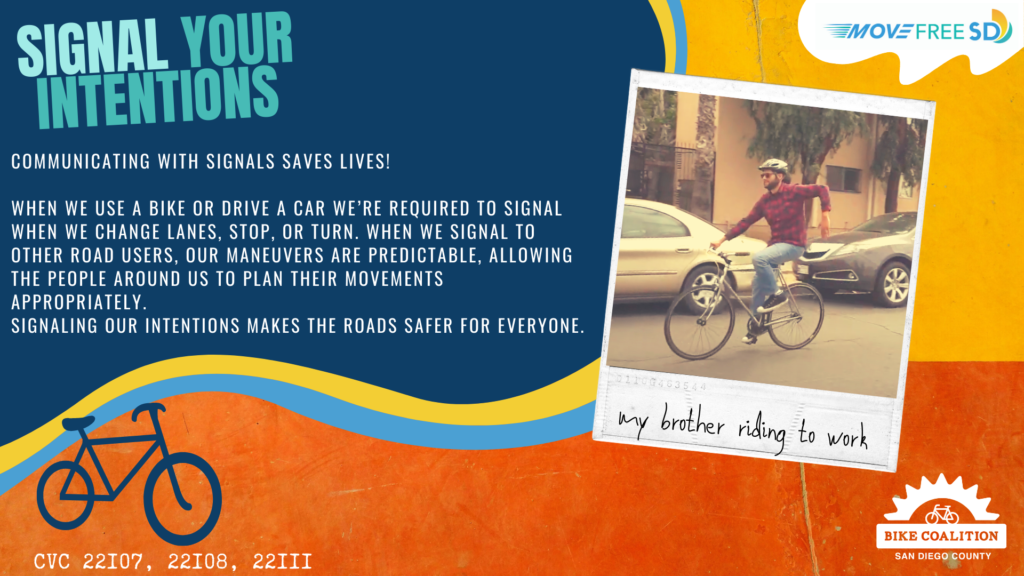
(a) Left turn—hand and arm extended horizontally beyond the side of the vehicle.
(b) Right turn—hand and arm extended upward beyond the side of the vehicle, except that a bicyclist may extend the right hand and arm horizontally to the right side of the bicycle.
(c) Stop or sudden decrease of speed signal—hand and arm extended downward beyond the side of the vehicle. CVC 22111
The Box Left Turn:
If you don’t feel comfortable riding into an intersection to make a left turn, another option is performing a “box left turn.”
(This image shows a riding coming towards you and making their left turn).
- As you approach the intersection stay in the right m
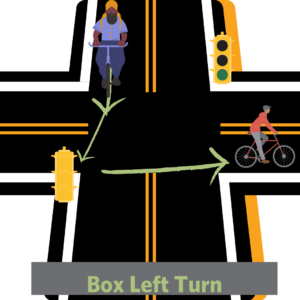 ost lane that is going straight.
ost lane that is going straight. - Signal your intention to move right by putting out your right arm. You may also signal your intention to slow by putting your left fist behind your back.
- Ride across the road and stop either at the cross walk that will take you in your intended direction, or in the traffic lane that will take you in your intended direction. If you plan to cross using the crosswalk, get off your bike and wait on the sidewalk
- When the light turns to green, ride or walk across the intersection to complete you left turn and continue on your way.
* Bicycle hand signal images below are credited to the California Department of Motor Vehicles.
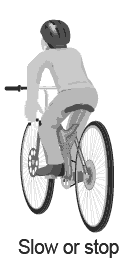
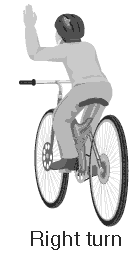
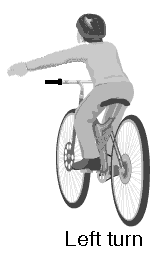
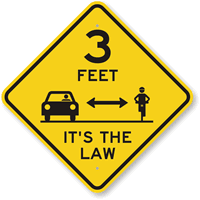
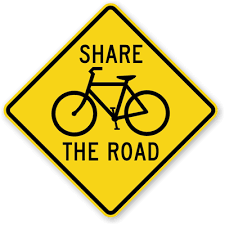
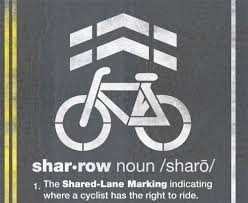
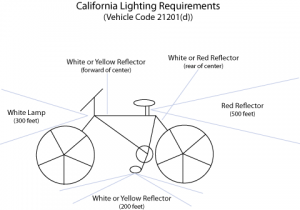
Additional Safety and Road Rule Resources
- CA DMV
- CVC – California Bicycle Laws
- CA Vehicle Code – VEH, DIVISION 11. RULES OF THE ROAD
- NHTSA – Bicycle Safety
- CALIFORNIA BICYCLE LAWS
